I am a Grade 11 student, and all my peers are obsessed with the future. 9 out of 10 conversations with my friends are about universities, dream jobs, or what we want to pursue after high school. My laptop is already plastered with stickers from universities I don’t know if I’ll even apply to yet, and my diary is filled with more notes about grades for admissions than personal thoughts. My best friend and I have already planned the fantasy apartment that we’ll rent together if we get into the same university.
However, I recently found that keeping my mind on the future is preventing me from living in the present. I selected courses I had absolutely no interest in just to boost my average. I found myself doing schoolwork with the intention of getting good grades for university admissions. At one time, I had thought of high school as nothing more than a highway to transport me from childhood to adulthood. I felt that way until last month when I attended my school’s semi-formal dance (半正式舞会).
As I danced with 200 sweaty teenagers in the venue, I felt a feeling I hadn’t felt for a long time: I was present, and we were all present. I wasn’t worried about my future because that wasn’t relevant at that moment. All that mattered was that we were young. We all lost ourselves in teenage bliss (幸福) on the dance floor without a single thought of our futures in our heads. What a wonderful feeling adolescence is.
That night changed everything. I understand now that high school is more than just a pathway to adulthood. High school is a rightful destination of its own. Ever since I’ve been trying to spend every second of my life living in the moment. Every time I catch myself going down the mental rabbit hole of the future, I take a step back and recenter myself. Instead of thinking years into my career, I try to think just one day at a time. Since my semi-formal, I’ve lived my life as an adolescent, not an adult-to-be.
1. Why did the author select courses he disliked?(no more than 5 words)2. What did the author use to think of high school?(no more than 10 words)
3. What does the underlined phrase mean in Paragraph 4?(no more than 2 words)
4. What’s the author’s new attitude towards high school?(no more than 10 words)
5. What’s the highlight or unforgettable moment of your high school life? Please explain it.(no more than 25 words)
Once upon a time, in a little village called Charmington, there lived a shy and unconfident girl named Lily. Lily was a kind-hearted soul, but her lack of self-assurance often led her to doubt her own beauty and worth.
One sunny day, as Lily wandered through the streets of Charmington, she came across a charming little shop filled with shining hair accessories (配饰). Among the treasures, her eyes were attracted by a lovely bow (蝴蝶结) that seemed to callout to her. Despite her hesitation, something inside Lily told her to take a small act of self-expression and pay for the bow. She bought it and gently put it in her hair. At that very moment, a magical transformation took place. Lily felt a burst of confidence, as if the bow had given her a newfound confidence and charm.
Excited about her new accessory, Lily confidently walked down the busy streets of Charmington, unaware that the bow had slipped and dropped unnoticed from her hair. Her newfound confidence made her feel beautiful inside and out. As Lily walked, something amazing began to happen. People passing by couldn’t help but notice her beauty, the warmth that shined from herself. Strangers smiled at her, complimenting her on her look and bright smile.
Confused by their compliments, Lily touched her hair, only to realize that the bow was missing. Instead of feeling embarrassed or disheartened, she couldn’t help but be amazed by the power of her own confidence. Lily began to understand that true beauty lies not in outside decorations but in self-assurance and grace. It was her confidence that had caught the attention and admiration of those around her.
1. What was the biggest challenge for Lily? (No more than 15 words.)2. What happened to Lily’s new bow?(No more than 10 words.)
3. What does the underlined word “complimenting” probably mean? (Only 1 word.)
4. According to the passage, what is the true beauty? (No more than 15 words.)
5. In your opinion, how to build your own confidence? (No more than 20 words.)
My elder brother Steve, in the absence of my father who died when I was six, gave me important lessons in values that helped me grow into an adult.
For instance, Steve taught me to face the results of my behavior. Once when I returned in tears from a Saturday baseball game, it was Steve who took the time to ask me what happened. When I explained that my baseball had scared through Mrs. Holt’s basement window, breaking the glass with a crash, Steve encouraged me to confess (认罪) to her. After all, I should have been playing in the park down Fifth Street and not in the path between buildings. Although my knees knocked as I explained to Mrs. Holt, I offered to pay for the window from my pocket money if she would return my ball.
I also learned from Steve that personal property is a sacred (神圣的) thing. After I found a shiny silver pen in my fifth-grade classroom, I wanted to keep it, but Steve explained that it might be important to someone else in spite of the fact that it had little value. He reminded me of how much I’d hate to lose to someone else the small dog my father carved from a piece of cheap wood. I returned the pen to my teacher, Mrs. Davids, and still remembered the smell of her perfume as she patted me on my shoulder.
Yet of all the instructions Steve gave me, his respect for life is the most vivid in my mind. When I was twelve I killed an old brown sparrow in the yard with a BB gun. Excited with my accuracy. I screamed to Steve to come from the house to take a look. I shall never forget the way he stood for a long moment and stared at the bird on the ground. Then in a dead, quiet voice, he asked, “Did it hurt you first, Mark?” I didn’t know what to answer. He continued with his eyes firm,” The only time you should even think of hurting a living thing is when it hurts you first. And then you think a long. long time.” I really felt terrible then, but that moment stands out as the most important lesson my brother taught me.
1. Why did the author weep when returning from a baseball game? (no more than 12 words)2. The underlined part can be replaced by
3. How did the author kill the old brown sparrow? (no more than 5 words)
4. What important lessons did the author learn from Steve? (no more than 20 words)
5. How are you inspired by the lesson? Explain in your own words. (no more than 20 words)
Just like everyone, I have experienced ups and downs in my life. I am an aerospace engineer from India. I was told by my relatives, close friends and others that it was hard for a non-IT student to pursue a master’s degree in IT and graduate from a US university.
I had never taken courses related to computers or programming. I was never interested in being a programmer, but things changed. I became so captivated by the convenience IT has brought to our life that I made up my mind to chase a master’s degree in IT.
At first, I came across too many difficulties and setbacks. Coming from a middle-class family, the huge cost per credit was a big issue. My English accent was terrible. Most importantly, the course seemed impossible at first. Although I felt so discouraged and frustrated, I never thought of giving up.
Then I decided to choose my university because it promised its students to help them learn practically. During my first month, it was difficult to understand the Americans’ accent and finish my assignments. But I never gave in. I walked two miles to the university every day so that I could use my travel money to buy a meal. I started looking for jobs and I got an offer to work as a student assistant, which meant lifting benches and chairs every day.
I took all these challenges as my chances, and I believed that hard work was my strength. Right now I am graduating with a GPA of 3.96/4 and a job offer from a multinational company that has asked me to start right after graduation.
When you have a dream to realize, there is nothing that can stop you. All you need is the diligence and persistence. Hard work always pays off. Having a determined will is also necessary.
1. Why did the author’s family and friends say that it was hard for him to pursue a master’s degree in IT? (no more than 8 words)2. What does the underlined part “captivated by” in paragraph 2 mean? (2 words)
3. What is the main idea of paragraph 3? (no more than 10 words)
4. What made the author graduate with a higher GPA and a good job offer? (no more than 15 words)
5. What do you learn from the author’s story? (no more than 25 words)
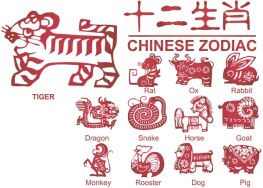
Chinese zodiac signs represent twelve different types of personalities. The zodiac traditionally begins with the sign of the Rat, and there are many stories about the origins of the Chinese Zodiac which explain why this is so. The Chinese animal zodiac, or sheng xiao in pinyin (literally translated as “born resembling”), is a rotating cycle of 12 years, with each year being represented by an animal and its character or features.
Traditionally these recurring animals were used to date the years, a different animal for each year, with each animal year repeated every 12 years. There are altogether 12 animals, which are, in order: rat, ox, tiger, rabbit, dragon, snake, horse, ram, monkey, rooster, dog and pig.
Actually the Chinese animal zodiac has certain similarities with the Western zodiac. Both have rotating cycles divided into 12 parts, and both imply the influence of each sign on a person’s personality. However, the differences are major. The Chinese animal zodiac is divided into years, while the Western zodiac is divided into months, and the animals are not associated with constellations.
There is no connection between the twelve animals of the Chinese Zodiac and the twelve signs of the Western Zodiac.
Western astrology is based upon a system which uses the path of the sun (and the moon and planets) through the heavens and look to the constellations (e.g. Aries, Taurus, Gemini etc) which lie along this path.
The Chinese system, on the other hand, focuses on Zi Wei or the Pole Star and the constellations which relate to it.
The Chinese system of time keeping is based on the Heavenly Stems and Earthly Branches forming a 60 year cycle. There are 10 sets of Heavenly Stems and 12 sets of Earthly Branches. The 10 Heavenly Stems have to be repeated 6 times in order to match the 12 Earthly Branches which are repeated 5 times to give you sixty pairs of stems and branches.
The names of the year are taken from the pairs of Stems and Branch in the sixty year cycle. For example 1924 marks the start of the sixty year cycle and has the name of Jia Zi (Jia is the Stem and Zi the Branch). This cycle is repeated every sixty year.
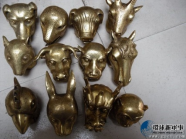
Rat—Charming
Year of Birth: 1912, 1924, 1936, 1948, 1960, 1972, 1984, 1996, 2008, 2020
Personality: Quick-witted, clever, clairvoyant, short-tempered, ambitious and manipulative. They are charming and attractive to the opposite sex, loyal and generous to people that they considers part of their pack. They are resourceful and eager to seek knowledge.
Ox—Patient
Year of Birth: 1913, 1925, 1937, 1949, 1961, 1973, 1985, 1997, 2009, 2021
Personality: Calm, diligent, modest, honest, straight-forward, easy-going but sometimes can be stubborn. A born leader, the ox has a tendency to inspire confidence in others. They hate failure and don’t like to be challenged.
Tiger—Sensitive
Year of Birth: 1914, 1926, 1938, 1950, 1962, 1974, 1986, 1998, 2010, 2022
Personality: Thoughtful, rebellious, sensitive, success-oriented, humanitarian, impatient and aggressive. Tigers are embodiment of lordliness and power. They are respected by other people, though they sometimes act antiauthoritarian and get into conflict with authority or elder people.
Rabbit—Articulate
Year of Birth: 1915, 1927, 1939, 1951, 1963, 1975, 1987, 1999, 2011, 2023
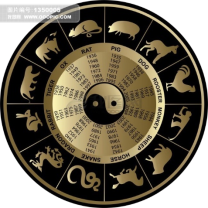
Personality: Popular, amiable, affectionate, sincere, and opportunistic. Rabbits enjoy being surrounded by family and friends. Sometimes they tend to get sentimental, but rarely lose temper. Being cautious and conservative, they are said to be financially lucky and will be successful in business.
Dragon—Healthy
Year of Birth: 1916, 1928, 1940, 1952, 1964, 1976, 1988, 2000, 2012, 2024
Personality: Energetic, intelligent, gifted, healthy, charismatic, noble and brave. The dragon is a popular and respected individual. A natural born leader, the dragon tends to inspire trust and confidence, and is good at giving orders, though sometimes they can be tactless and brash.
Snake—Lonely
Year of Birth: 1917, 1929, 1941, 1953, 1965, 1977, 1989, 2001, 2013, 2025
Personality: Smart, intuitive, sympathetic, analytical, cautious, introverted and insecure. Snakes prefer to be loners, relying strongly on their own intuition and judgment, and have little faith in other’s judgment. They hold a mine attitude towards money. Being financially lucky, they seldom worry about money.
Horse—Popular
Year of Birth: 1918, 1930, 1942, 1954, 1966, 1978, 1990, 2002, 2014, 2026
Personality: Sharp-witted, cheerful, smart, open-minded, talkative and talented. Horses enjoy traveling, entertainment and large crowds. An independent thinker, the horse does not like to hear other peoples’ suggestions. They sometimes tend to talk too much and become impatient
Goat—Elegant
Year of Birth: 1919, 1931, 1943, 1955, 1967, 1979, 1991, 2003, 2015, 2027
Personality: Gentle, calm, shy, creative, understanding, insecure and pessimistic. They worry a lot and like to complain. Appearance and material comfort are very important to them. They need lots of support, love, care, and reassurance.
Monkey—Clever
Year of Birth: 1920, 1932, 1944, 1956, 1968, 1980, 1992, 2004, 2016, 2028
Personality: Upbeat, clever, inquisitive, sociable and flexible. They are good at solving problems and making decisions. Monkeys can be loose cannons because they lack self-control and give up easily.
Rooster—Good Thinkers
Year of Birth: 1921, 1933, 1945, 1957, 1969, 1981, 1993, 2005, 2017, 2029
Personality: practical, cautious, conservative, alert, shrewd and sturborn. Roosters do not get along very well with others because they seem boastful and emotionally cold. They like dreaming and bravado. Firm in sticking to their own decisions, they often speak their mind.
Dog—Loyal
Year of Birth: 1922, 1934, 1946, 1958, 1970, 1982, 1994, 2006, 2018, 2030
Personality: Loyal, trustworthy, faithful, friendly and modest. They do well in business, but have trouble finding mates. Dogs have a sharp tongue and tend to find faults with many things. Dogs often feel guilty of telling white lies, and sometimes are too sensitive and moody
Pig—Chivalrous
Year of Birth: 1923, 1935, 1947, 1959, 1971, 1983, 1995, 2007, 2019, 2031
Personality: Polite, obliging, tolerant, sociable, naive and perfectionist. Pigs make a wonderful companion. Though they tend not to make lots of friends, they keep a few real and loyal friends. They like helping others, but also expect the same from others. Pigs have good taste and enjoy fine things. When they face a problem, they solve it with fortitude and honesty.(983 words)
1. What’s the difference between the Chinese animal zodiac and the Western zodiac?
2. What’s the year when you were born? According to the text tell your partner your character.
3. Peter was born in 1997. Please tell him what kind person he may be according to Chinese zodiac signs.
4. Please list 12 animals in correct time order.
The cheongsam, or Qipao in Chinese, is developed from a kind of ancient clothing of Manchu ethnic minority. In ancient times, it generally referred to long gowns worn by the people of Manchuria, Mongolia and the Eight-Banner.
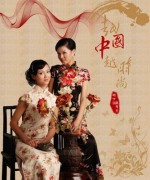
In the early years of the Qing Dynasty (1644—1911), long gowns featured collarless, narrow cuff in the shape of a horse’s hoof, buttons down the left front, four slits and a fitting waist. Wearers usually coiled up their cuff, and put it down when hunting or battling to cover the back of hand. In winter, the cuff could serve to prevent cold. The gown had four slits, with one on the left, right, front and back, which reached the knees. It was fitted to the body and rather warm. Fastened with a waistband, the long gown could hold solid food and utensils when people went out hunting. Men’s long gowns were mostly blue, gray or green; and women’s white.
Another feature of Manchu cheongsam was that people generally wore it plus a waistcoat that was either with buttons down the front, a twisted front, or a front in the shape of lute, etc.
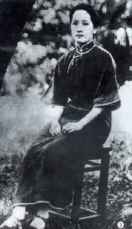
When the early Manchu rulers came to China, they moved their capital to Beijing and cheongsam began to spread in the Central Plains. The Qing Dynasty unified China, and unified the nationwide costume as well. At that time, men wore a long gown and a mandarin jacket over the gown, while women wore cheongsam. Although the 1911 Revolution turned over the rule of the Qing (Manchu) Dynasty, the female dress survived the political change and, with succeeding improvements, has become the traditional dress for Chinese women.

Till the 1930s, Manchu people, no matter male or female, all wore loose-fitting and straight-bottomed broad-sleeved long gowns with a wide front. The lower hem of women’s cheongsam reached the calves with embroidered flower patterns on it, while that of men’s cheongsam reached the ankles and had no decorative patterns.
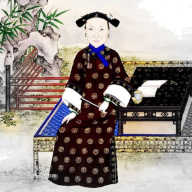
From the 1930s, cheongsam almost became the uniform for women. Folk women, students, workers and highest-tone women all dressed themselves in cheongsam, which even became a formal suit for occasions of social intercourses or diplomatic activities. Later, cheongsam even spread to foreign countries and became the favorite of foreign females.
After the 1940s, influenced by new fashion home and abroad, Manchu men’s cheongsam was dying out, while women’s cheongsam became narrow-sleeved and fitted to the waist and had a relatively loose hip part, and its lower hem reached the ankles. Then there appear various forms of cheongsams we see today that emphasize color decoration and set off the beauty of the female shape.

Why do Han people like to wear the cheongsam? The main reason is that it fits well the female Chinese figure, has simple lines and looks elegant. What’s more, it is suitable for wearing in all seasons by old and young.
The cheongsam can either be long or short, unlined or interlined, woolen or made of silk floss. Besides, with different materials, the cheongsam presents different styles. Cheongsams made of silk with patterns of small flowers, plain lattices or thin lines demonstrate charm of femininity and staidness; those made of brocade are eye-catching and magnificent and suitable for occasions of greeting guests and attending banquets.
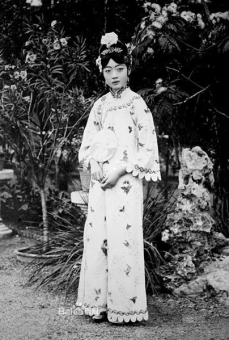
When Chinese cheongsams were exhibited for sales in countries like Japan and France, they received warm welcome from local women, who did not hesitate to buy Chinese cheongsams. Cheongsam features strong national flavor and embodies beauty of Chinese traditional costume. It not only represents Chinese female costume but also becomes a symbol of the oriental traditional costume.
1. What is the cuff used for if you wear Qipao?2. When did cheongsam almost become the uniform for women?
3. Why was Manchu men’s cheongsam out of fashion after the 1940s?
4. Why do Han people like to wear the cheongsam?

Auspicious numbers have long played a part in Chinese culture -- witness the 9,999 rooms of Beijing's Forbidden City -- and the right digits can still play a role in the choice of a home, telephone number or even a birthday.
Even numbers are luckier than odd. Two suggests harmony, six smooth progress. Four, a homonym for death, is unlucky, while nine, as highest single digit, stands for longevity.
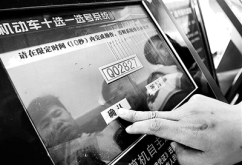
Eight, though, is the luckiest of all. The pronunciation of the number eight is similar to the character “fa” in Cantonese, which means prosperity, money and status. This opinion was mostly held by people in Guangdong province before, but after the reform and opening up about 20 years ago, it is popular all over the country with the movement of population becoming easier and faster.
It is surely no coincidence that the Games of the XXIX Olympiad opened at 8pm local time on the eighth day of the eighth month of 2008.
The 1988 Olympics in Seoul were held in late September to avoid the scorching north Asian summer and the Beijing Games were originally going to open in the relative cool of late August.
Although the current numerological superstitions originated in the south of China, there is plenty evidence of their hold in the north.
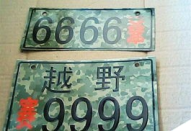
In Beijing, a hefty premium is paid for telephone numbers with plenty of eights, while apartments on the eighth floor are much coveted. Fourth floors, in name at least, rarely exist.
Apartment blocks designed to appeal to western buyers and prosperous Chinese often register no floors four, 13 and 14.
Expectant mothers in China are known to pick the dates of Caesareans carefully in order to endow their offspring with the luckiest birth date possible.
Back down south in Hong Kong, businessmen have paid huge sums for personalised car registration and in the 1990s the number “8” licence plate was sold for HK$5 million (343,308 pounds). (348 words)
1. Tell your friends what the Chinese numbers 2、4、6、8 mean in Chinese culture?
2. If there are no Floors 13 and 14 in an apartment block, do you think it inconvenient? If so, how can you solve the problem?

In historical operas and films, one can often see Chinese people performing kowtow - a traditional custom for worship on bended knees. It is said that the history of kowtow can be traced back as early as the legendary Emperor Xuan Yuan. How this custom originated and how it survived throughout history has a lot to do with the living standards and customs of ancient Chinese people.
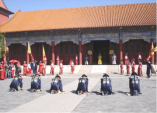
There was no formal chair or bench before the Han Dynasty (206BC-220AD) in China. People usually sat on mats made of reeds or bamboo strips at dinnertime, during discussions or reading. Guests were usually invited to sit on an extra mat to show respect. Even top leaders would sit on a mat, which was usually of a higher quality. For instance, in the Zhou Dynasty (1100-221 BC) on the occasion of meeting the monarch, the matting of the emperor was five-colored, with screens set beside it.
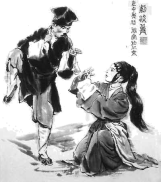
Therefore, the meaning of the words “to sit” in ancient times was completely different from what we understand today. “Sitting” is generally known as kowtow today: Both knees bent down on the mat, with the buttocks resting on the heels. When meeting a guest, the host usually had to stretch the upper part of the body to show respect. Gradually, the custom of kowtow became a part of daily life.
To show enough respect, one had to perform Kowtow in ancient times, especially to seniors and higher officials. During the Zhou Dynasty, there was a set of strict rules about kowtow, which played a very important role in maintaining authority and reverence towards emperors and, in turn, strengthening the feudal system. Emperors, therefore, were all willing to follow the tradition.
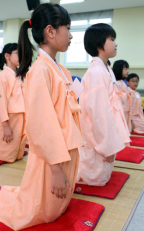
In the Han Dynasty, chairs and benches gradually appeared, which changed the original sitting gesture greatly. But the tradition of kowtow survived, and became a symbol of different classes. The custom was widely adopted in officialdom. For instance, the custom of kowtow was applied when officials met the emperor; when officials of lower rank met those from a higher rank; when minors met masters, etc. The custom not only prevailed on official occasions but also among the common people. During sacrifices and birthday celebrations for the elders, kowtow was also passed on from generation to generation. Later, the custom of zuoyi (a bow with hands folded in front) and jugong (a bow) were also added. With the abolishment of the feudal system in 1911, kowtow also ended gradually. (411 words)
1. Please describe how to kowow?2. On which occasions should be kowow performed?
3. Why were emperors willing to follow the tradition of performing kowow?
4. When was it that kowtow began to disappear gradually?
There exist in both spoken and written Chinese a great number of idioms also called chengyu, literally “set language” or “set expressions”, which are translated in English as “idiom”.
These may be general in nature or they may reflect famous events or stories from Chinese history, or they may be direct quotations from famous works of Chinese literature. The great majority of Chinese idioms are composed of four characters, which usually –though not always- can be parsed in groups of two.
Chinese idioms are usually composed in Classical Chinese and thus typically have a different grammatical structure from that of Modern Chinese. In their speech and writing, Chinese people make frequent use of idioms, since these often sum up briefly a meaning which it would otherwise take many words to express.
Contextually appropriate use of idioms tends to impress hearers as to the educational level and eloquence of the speaker. Since idioms are frequently used in formal speech and higher-level written materials, such as newspaper editorials and commentaries, they serve as a useful medium for helping learners move up on the proficiency ladder.

Familiarity with idioms can also be helpful for the non-native in gaining credibility in Chinese society. Indeed, almost nothing impresses a Chinese person more than a properly used idiom coming from the mouth of a foreigner.
There are a great number of idioms in Chinese, with certain dictionaries of idioms including well over 20,000 entries. All Chinese people know idioms, even though the total number known by any one individual will depend on her or his education, linguistic talent, general intelligence, etc…
Idioms are such an important part of Chinese popular culture that there even exists a game called chengyu jielong that involves someone calling out an idiom, with someone else then being supposed to think of another idiom to link up with the first one, so that the last character of the first idiom is the same as the first character of the second idiom, and so forth.
According to the Chinese search engine Baidu, the longest idiom chain ever created was all of 1,788 idioms long!
For the learner of Chinese as a second/foreign language, idioms are not so easy to understand, since the functional meaning of idioms is often different from the surface meaning and may, to quote an English idiom, be “greater than the sum of its parts”.
This is because Chinese idioms frequently involve literary allusions, extended meanings, and metaphors.
For example, consider the following idiom: 雪中送炭 xuě zhōng sòng tàn
This could be translated literally as “in the snow to deliver charcoal”; however, the actual meaning usually has nothing at all to do with “snow” or “charcoal”, but rather involves the rendering of aid to someone at time of need.
Idioms have a long history in Chinese, with some having existed for well over 2,000 years. Indeed, the grammatical structure of most Chinese idioms is that of Classical Chinese.
There are three common origins of idioms: ancient fables and historical tales; Buddhist and Confucian classics as well as other works of ancient Chinese literature; and habitual collocations of terms that gradually came to be stable and used in a certain way, even though their exact origin is not known today. To use a Chinese idiom, we could say there are in the Chinese language as many idioms “as there are hairs on an ox”.(598 words)
1. What is the main character of Chengyu?2. What does it depend on whether you can use Chengyu properly or not?
3. Why does the writer say idioms work as a useful medium for helping learners move up on the proficiency ladder?
4. What is chengyu jielong? Give an example please.
5. List three common origins of idioms.
6. Explain the follow Cehnyu in English.
衣食住行 yī shí zhù xíng
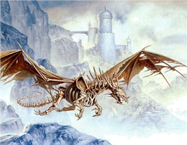
Dragon culture exists in both the Eastern world and the Western world. However, dragons have different reputation in western culture and in Chinese culture. The Western dragons are evil animals from hell. They usually have wings and can send out fire from their mouths.
▲Offspring of the Dragon
A dragon has an extending forehead indicating wisdom and antlers signifying longevity. Its ox’s ears stand for success in the imperial examination; it has tiger’s eyes as a sign of power; eagle’s claws showing bravery; while a fish’s tail implies flexibility and the horse’s teeth are a mark of diligence and so on.
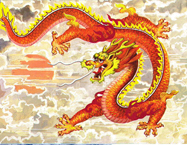
Dragons are deeply rooted in Chinese culture, so the Chinese often consider themselves as “the descendants of the dragon”. In Chinese culture, dragons are generous and wise. They are closely connected with the ancient royal family. According to the popular belief, if you are born in the year of dragon, you will be an intelligent and brave leader.
Why is dragon culture so prosperous in China? This is a mystic journey to find the key.
As a matter of fact, the dragon creation is the Chinese ancestors’ imagination. The dragon is now a kind of culture phenomenon. It has become a spiritual tie linking the nation. The dragon, as the symbol of the Chinese nation, has become part of the Chinese people. They have deep feelings for the dragon, and are proud to call themselves “the offspring of the dragon”.
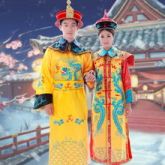
China is the birthplace of dragon culture. This has been shown by relics of the Neolithic Age discovered in the Yellow River, Yangtze River and Liaohe River Basins.
▲Origin of Dragon Culture
Dragon was one of the totem worship images in remote times when people liked to use the images of creatures or plants which they held in awe as symbols of their tribes. They believed that totem worship could bring them protection and good luck. Chinese dragon was used as a totem of the emperor, symbolizing the power of the emperor. Only emperor can use the things which were decorated with dragon pattern.
Chinese dragon is of magic power. It can change the length of its body as it wishes; it can either fly or swim. It is believed to control the weather, being responsible for causing snowstorm, lightning, and tornadoes.
People in ancient China often offered sacrifices to Dragon for favorable weather and good harvest. In the Warring States Period (475-221BC), dragon was often drawn in the painting on silk. Dragons often appear in Chinese idioms and tales. (323 words).
1. What’s the difference between western dragon and Chinese dragon?2. Why do Chinese say they are offspring of the dragon?
3. What’s Chinese dragon like? Describe it.
4. In ancient times, were common people allowed to wear clothes with dragons decorated? If not, why?



